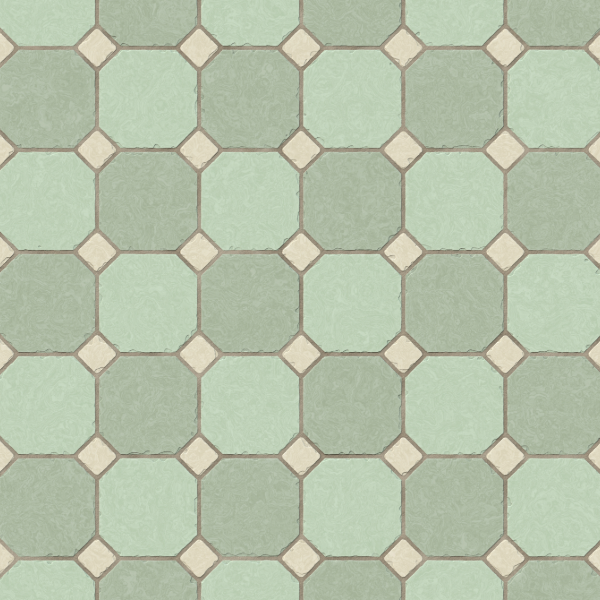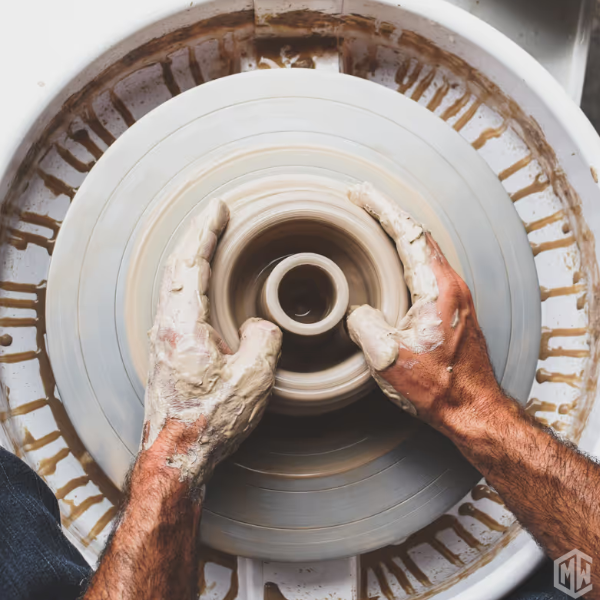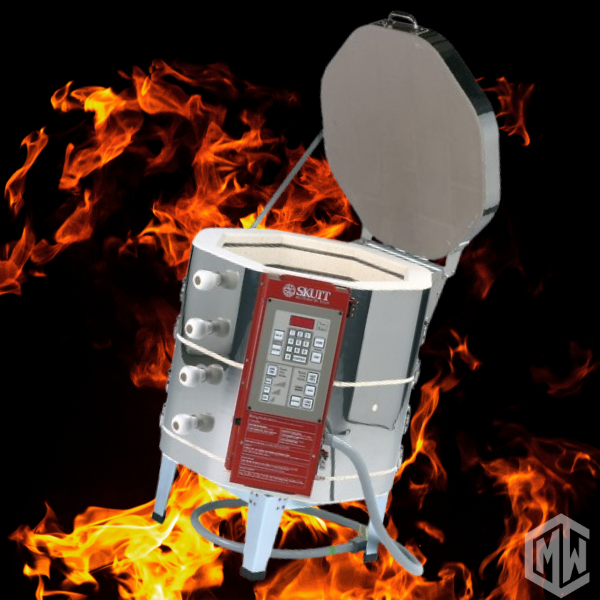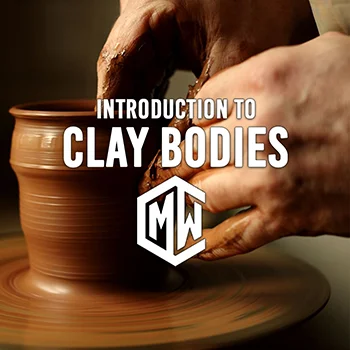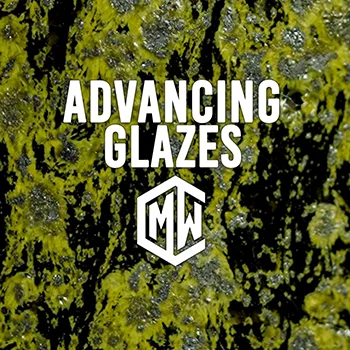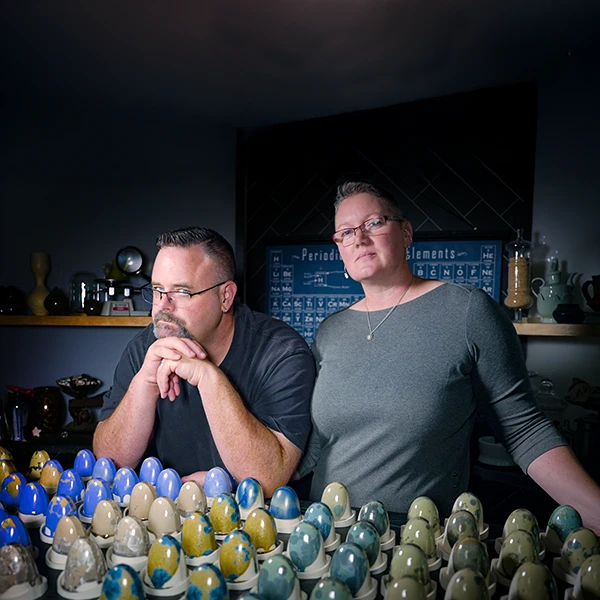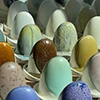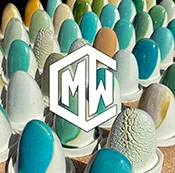Hey there, glaze enthusiasts! Ever had that moment when you open your kiln, brimming with anticipation, only to find little chips or divots missing from the foot and your otherwise glorious glaze?
Well, my friends, you’ve just encountered the curious case of “plucking”!

But don’t fret, because we’re about to dive deep into this ceramic conundrum and arm you with the knowledge to kiss those pesky plucked pieces goodbye. Let’s get started!
What Exactly is This “Plucking” We Speak Of?
Imagine a perfectly smooth, glossy glaze surface. Now picture tiny fragments of that glaze having seemingly popped off of your foot ring, leaving behind small, often jagged indentations on your foot. That, in a nutshell, is plucking! It’s a frustrating flaw that can mar the beauty of your hard work, but understanding what it is is the first step to conquering it. Think of it like little hiccups in your glaze’s otherwise flawless journey through the kiln.
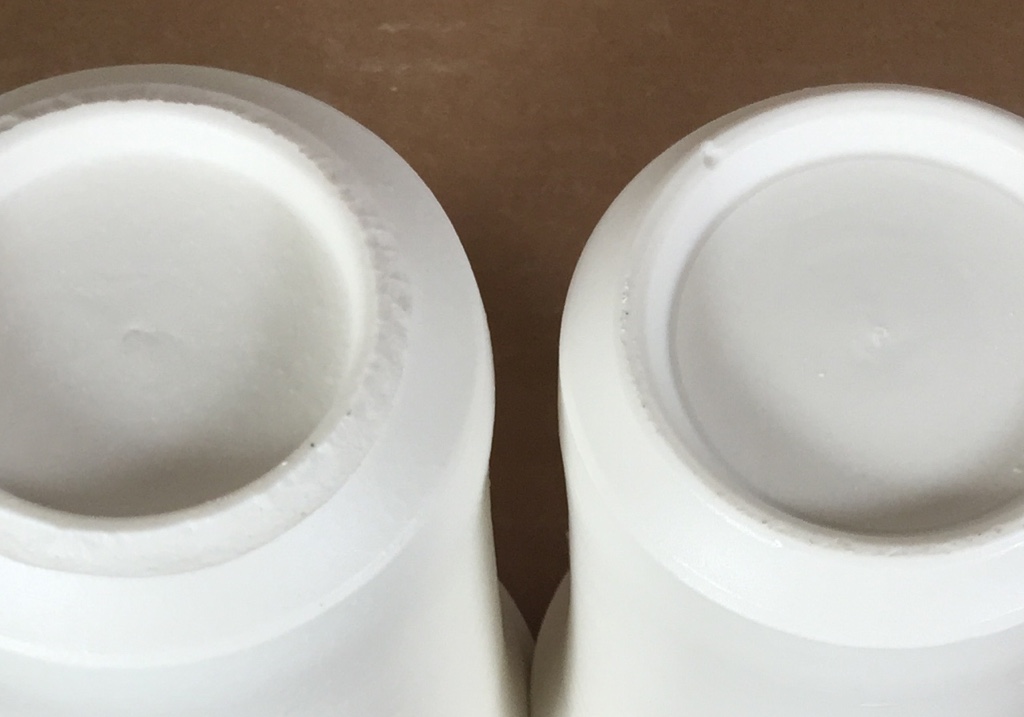
This image is owned by Digitalfire
Unmasking the Culprits: What Causes Plucking?
So, what sneaky scenarios lead to this ceramic caper? Several factors can contribute to plucking, and often it’s a combination of these elements acting in concert:
- Thick Glaze Application: A glaze layer that’s applied too thickly can exacerbate the issue. The thicker the glaze, the greater the potential for running during the firing. “How do I apply glaze?”
- Volatile Glaze Materials: Certain glaze ingredients can be soluble and come to the surface during the firing or cooling process. These reactions can create ghostly flashing on the foot or sides of your pot, making it more susceptible to plucking.
- Silicone Carbide Kiln Shelves: While not a direct cause within the glaze itself, if your kiln shelves and soluble sodium or other materials that come in contact that spells disaster for your foot ring. Because these shelves are incredibly tough and your clay body is much weaker. So something has to give when they fuse together. These points of attachment can lead to small fragments being pulled off when you’re unloading your kiln.
Operation: Smooth Surface – Troubleshooting and Prevention
Fear not, fellow ceramic artists! Plucking is a problem that can be tackled. Here’s your troubleshooting and prevention toolkit:
- Apply Glazes Evenly and Not Too Thickly: Aim for a consistent and moderate glaze application. If you’re dipping, ensure a quick, timed submersion. If brushing, apply multiple thin coats rather than one thick one.
- Test Your Glaze and Clay Combinations: Before committing to a large batch, always test your glazes on the specific clay body you’ll be using. Observe how they behave through the entire firing and cooling cycle. This helps identify potential fit issues early on.
- Be Mindful of Glaze Recipes: Understand the materials in your glazes. If you’re experiencing persistent plucking, research the materials of your glaze and clay body to find the culprits and consider adjustments to improve your outcome.
- Ensure Clean and Smooth Kiln Shelves: Regularly clean your kiln shelves to remove any loose debris or rough spots that could snag the bottom of your pieces. You can also use kiln wash to create a barrier.
- Soluble Situation: look for soluble materials in your glaze or clay body and consider removing them. Also try not to handle the piece while drying. This brings the soluble materials to the surface and causes problems. And if you have to touch the piece before it’s fired then be sure to clean it without using water. Water will rehydrate the soluble materials and you have the same problem as before.
The foot ring on the left is plucking, the right one is not. Why?
Now that we’ve been educated, let’s go back to this example from Digital Fire!
“These are translucent porcelains, they are vitreous. The firing is to cone 10. The one on the left is a cone 6 body, and, while it survives to cone 10 it does warp. But more important, it is much more vitreous (more melted). The plucking problem makes it quite difficult to get a good foot ring. The other, which has only slight plucking, is also quite vitreous (high in feldspar). The plucking problem on both can be solved by simply using a better kiln wash. What is better? More refractory, and therefore having a powdery, non-stick surface. Spend more money on your kiln wash, base it on calcined alumina or zircon.”
Plucking FAQs – Your Burning Questions Answered!
Let’s tackle some of those frequently asked questions about this perplexing plucking phenomenon:
- Q: Is plucking the same as shivering?
- A: No! While both are glaze defects related to stress, shivering usually manifests as larger, sharp flakes of glaze popping off, often at the edges. Plucking involves smaller, more localized chips or divots usually at the foot. Shivering indicates a glaze that is contracting significantly more than the clay body.
- Q: Can I fix a piece that has been plucked?
- A: Unfortunately not. You can grind the bottom of your piece to a smooth finish , but we don’t recommend filling them. Prevention is definitely the best cure!
- Q: Does the type of firing (oxidation vs. reduction) affect plucking?
- A: No. Plucking can happen in reduction or oxidation. It happens due to the materials in your glaze and or clay body.
- Q: Are certain glaze types more prone to plucking?
- A: Generally, glazes and clay bodies with soluble materials will have this issue. The problem can come and go which can be very frustrating.
So there you have it! Plucking demystified.
Remember, understanding the causes and implementing careful practices in your glazing and firing processes will significantly reduce the chances of encountering this frustrating flaw. Happy firing, and may your kiln openings be filled with nothing but beautifully smooth feet!
Hungry for more?
Ready to dive deeper?
Loved learning about ceramic glazes? Want to go even deeper? Check out our Workshops & Courses, now available in Spanish, or YouTube Channel where Matt breaks it all down, myth-busting and Stull chart included!


